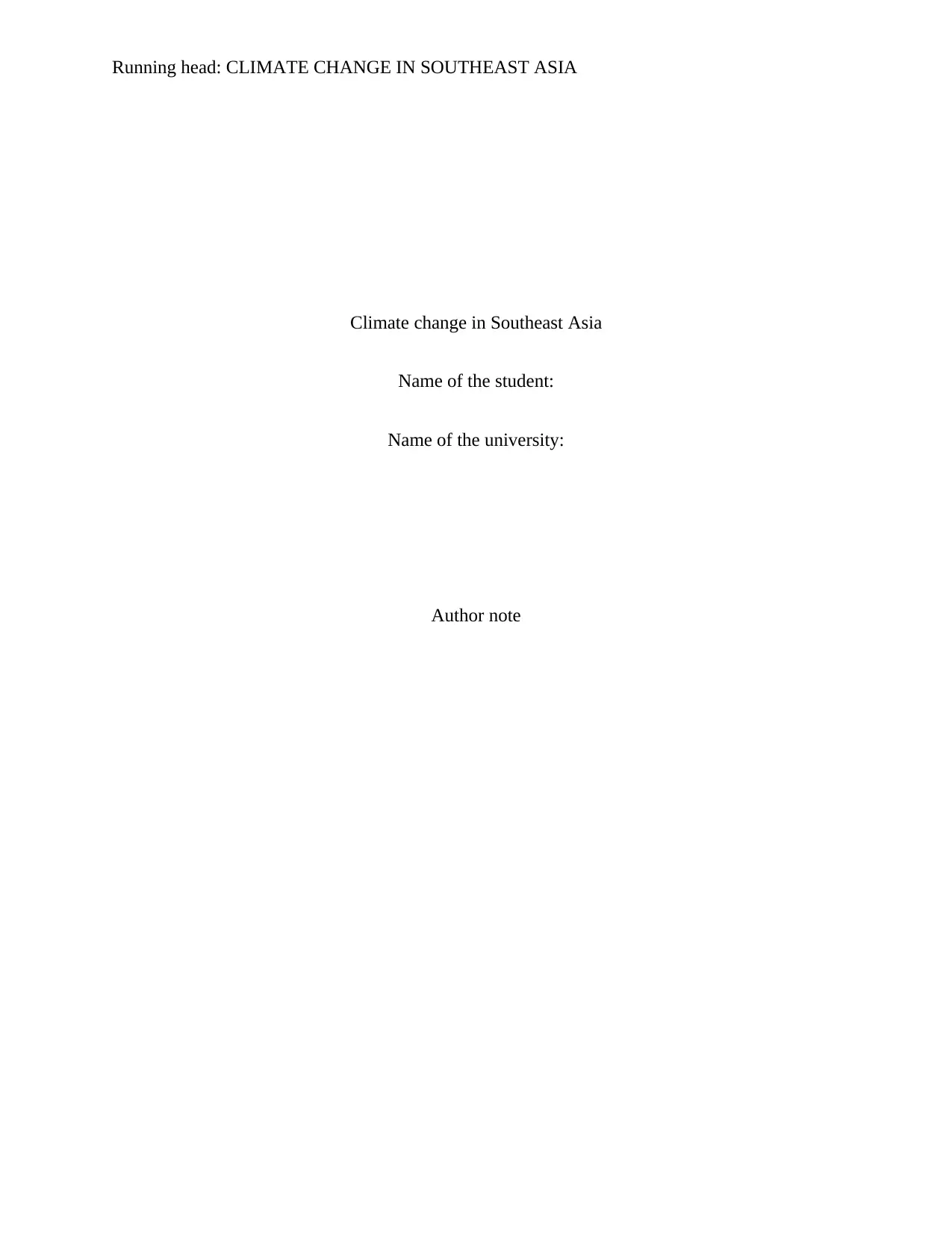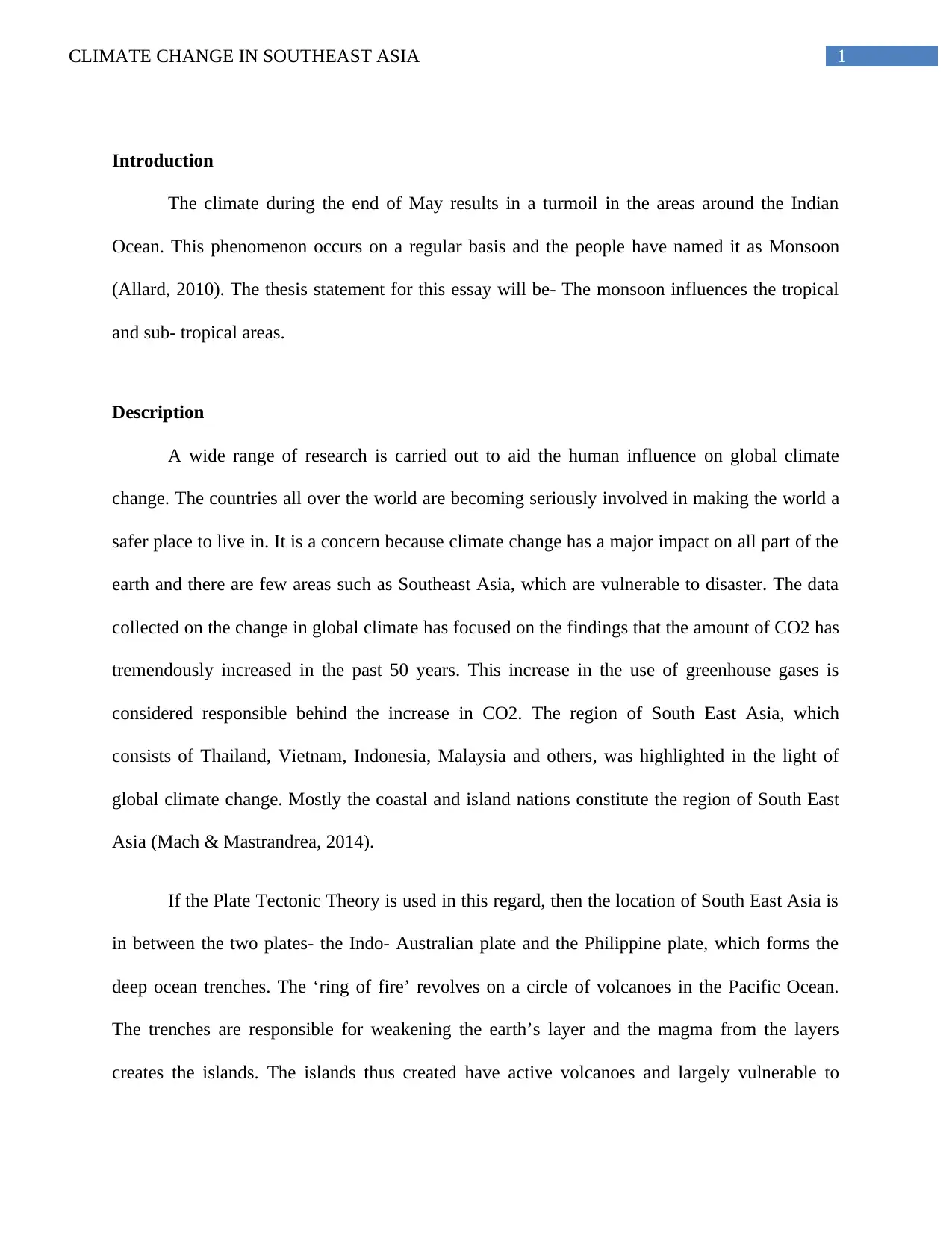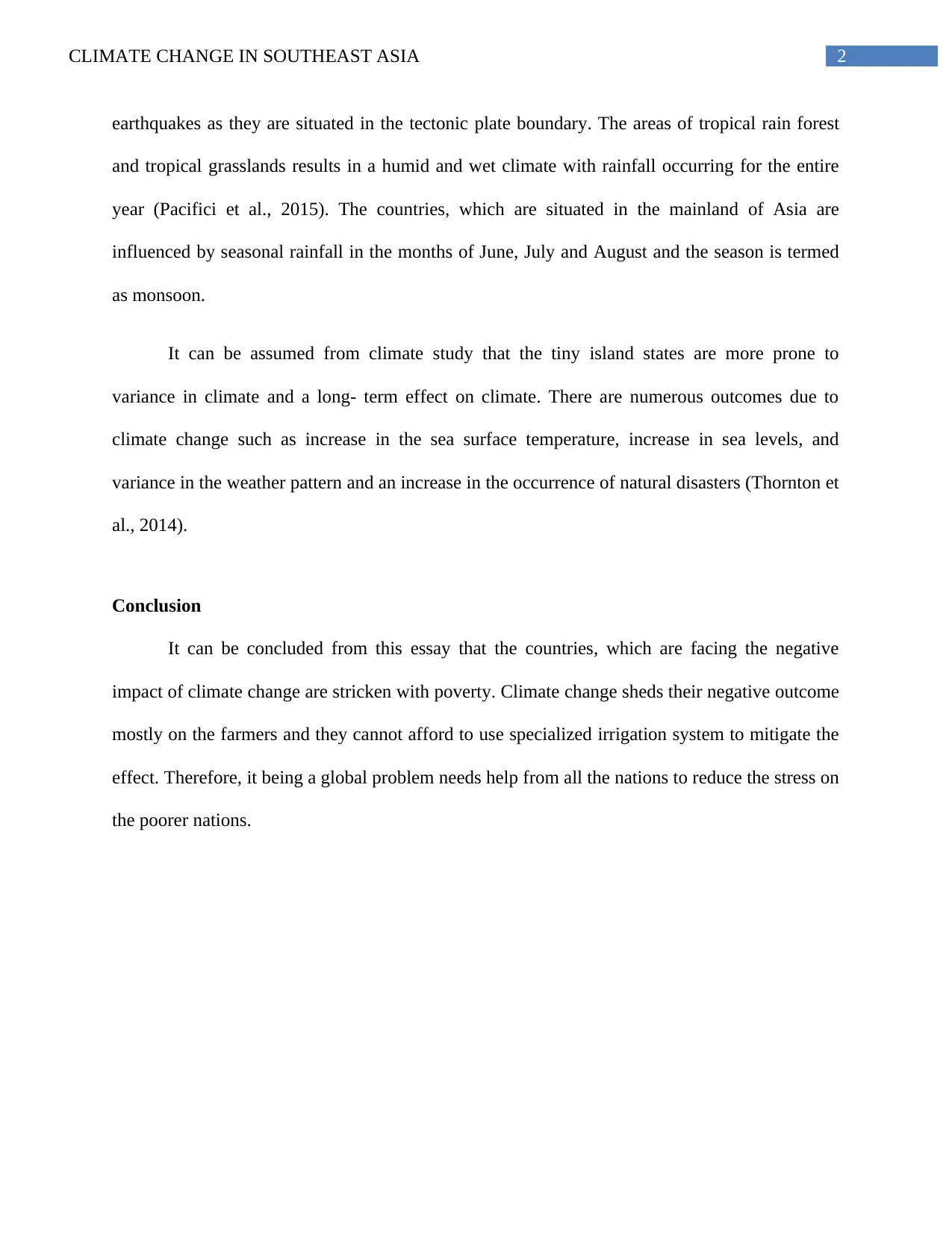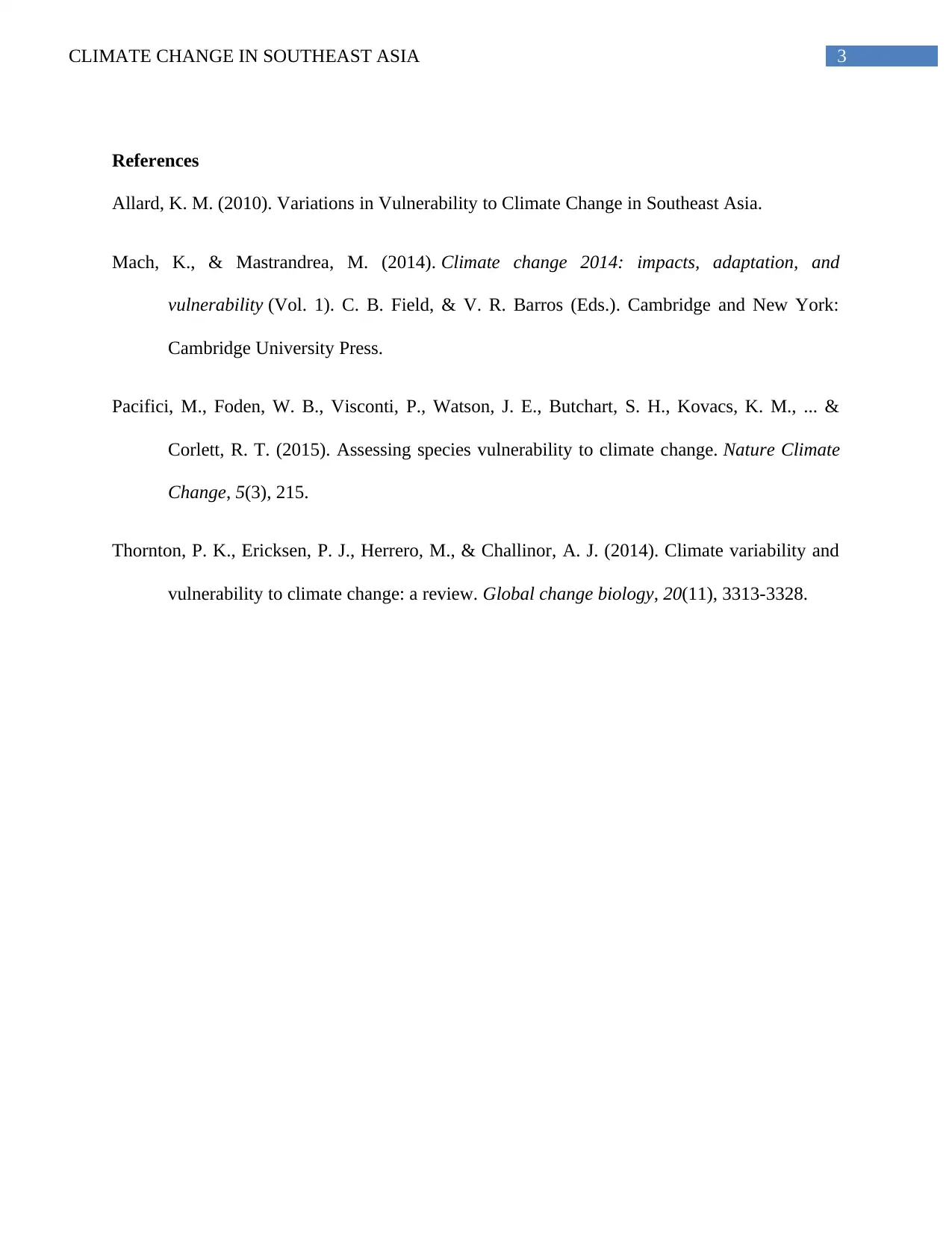Climate Change and Vulnerability in Southeast Asia: An Essay
VerifiedAdded on 2023/06/12
|4
|751
|402
Essay
AI Summary
This essay discusses the impact of climate change on Southeast Asia, a region highly vulnerable to its effects due to its geographical location and economic conditions. The essay highlights the increasing levels of CO2 and greenhouse gases as major contributors to global climate change, particularly affecting coastal and island nations in Southeast Asia. These nations, situated between tectonic plates and within the 'ring of fire,' face increased risks of rising sea levels, extreme weather patterns, and natural disasters. The essay concludes that climate change disproportionately affects poorer nations and farmers, emphasizing the need for global cooperation to mitigate these impacts and support vulnerable communities. Desklib provides a platform for students to access this and similar essays for academic assistance.
1 out of 4









![[object Object]](/_next/static/media/star-bottom.7253800d.svg)